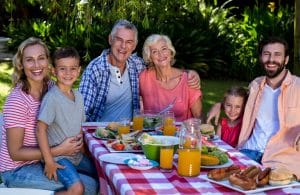I’m writing this from bed, as I wrote the previous three columns. I have a connective-tissue disease called Ehler’s-Danlos syndrome. Connective tissue links everything in our bodies: It’s in and around our muscles, organs, joints, veins, etc. I have been in pain for as long as I can remember, spent more time in doctors’ offices than I care to admit and been flattened periodically for months at a time.
Last year, from my bed, I watched leaves and then snow fall. It’s surreal and disorienting, a down-the-rabbit-hole experience, to watch the world move along as you stay still.
But even Alice learned lessons when she fell into Wonderland. My body is doing its thing and so is my brain. Every experience is not just a teachable moment but also a learning one, if we allow it to be. Here are some ideas I’ve picked up after six months mostly in bed.
Listen. My condition has not always been as bad as it is now. When I maintain my fitness and nutrition and keep stresses at bay, I’m functional much of the time and, although I’m still in pain, I flatter myself that most people would never know. But when I let exercise therapy slip and stress dictate my days, my body has a pretty effective way of telling me off: It falls apart. It’s in those hectic moments that we most need to listen—to ourselves and to others.
Two things at once. One morning I was in excruciating pain but still dragged myself to the Y to do my daily swim. As I labored through my laps, two lifeguards approached and asked whether I was OK. I burst into tears. (A definite low point.) One of the lifeguards tried to make me laugh by singing “Y.M.C.A.,” hand movements and all. I smiled weakly and continued on. Then, a strange thing happened. After a few laps, I found myself humming the song and smiling. It was an epiphany: I can be happy and in pain.
Choose laughter. Another swimming day, a splasher entered my lane. His arms attacked that surface like missiles. Every time he passed head-above-water me, I scrunched my face against the onslaught. Someone gave me a sympathetic look and I burst out laughing. After that, every time he passed, I laughed. I have no control over who gets in my lane any more than I have much control over this disease. But I do get to control my reaction.
Take joy. I love that phrase: Take joy. It’s so beautifully active. Joy is everywhere; we just have to grasp it. At first, as there was so much I was unable to do, I was saddened by what I saw as a narrowing of my life. However, I began to see the way this disease brought my priorities into focus. I couldn’t take my children apple or pumpkin picking last year. But I take joy in being able to kiss them every morning when they wake and every night before they sleep. Seize the small moments of pleasure.
Don’t apologize. One day, a woman approached my swimming lane asking to circle swim as we already had two people in the lane. “Sure,” I said, “but I’m sorry I’m really bad.” “Never apologize,” she said simply. I realized in that moment how often I apologize for not being healthy. Our world is made for well people. Doors are heavy, halls are long, steps are steep, and we’re all in a race to get somewhere. But we shouldn’t apologize for taking up space, for doing what’s right for our health.
Get help. Recently, I saw a tabloid article about Miley Cyrus whose headline read: “Miley finally admits she needs help.” But my response is, doesn’t everyone? Why is shame attached to asking for help?
Perhaps it has something to do with our pull-yourself-up-by-the-bootstraps mentality. Still, I know I can be fierce, independent and strong and ask for help. I’m proud to have assembled an incredible team of healers who work together to make me well. I am blessed with supportive family and friends. Even the lifeguards and swimmers at the Y—virtual strangers—notice when I struggle. This world is hard enough as it is. We make it harder by isolating ourselves and imposing strict ideas about how we should be.
In order to care for myself, I’m taking a break from Family Times. I’ve written much in this column over the years about modeling for our children. While I haven’t been able to play with my children the way that I used to, I hope that I am showing them a different set of lessons that are equally worthwhile. Perhaps my story will serve as a lifeline for someone else.




